Chicken wings are more than just a game-night staple—they are one of the most beloved comfort foods across the globe. Whether fried, grilled, baked, or tossed in bold buffalo sauce, wings bring people together at parties, family gatherings, and late-night dinners. However, behind their irresistible taste lies an important question: Are chicken wings healthy?
To answer this, we need to explore the chicken wings nutrition facts in detail. By understanding how cooking methods affect calories, protein, fat, and other nutrients, you can make smarter eating choices without sacrificing flavor. This comprehensive guide delves into nutritional values, preparation styles, health benefits, and tips for enjoying chicken wings in a balanced manner.
Nutritional Breakdown of Chicken Wings
Before diving into cooking styles, let’s start with the raw nutritional content of chicken wings.
| Nutrient | Amount (per 100g) | % Daily Value (DV) |
|---|---|---|
| Calories | 203 kcal | 10% |
| Protein | 20g | 40% |
| Fat | 16g | 24% |
| Saturated Fat | 4g | 20% |
| Monounsaturated Fat | 6g | — |
| Polyunsaturated Fat | 3g | — |
| Cholesterol | 89mg | 30% |
| Sodium | 80mg | 3% |
| Potassium | 220mg | 6% |
| Vitamin A | 2% DV | — |
| Vitamin B6 | 10% DV | — |
| Vitamin B12 | 12% DV | — |
| Niacin (Vitamin B3) | 45% DV | — |
| Calcium | 1% DV | — |
| Iron | 4% DV | — |
| Magnesium | 5% DV | — |
| Zinc | 10% DV | — |
Quick Takeaway
Raw chicken wings provide approximately 203 calories, 20 grams of protein, and 16 grams of fat per 100 grams. They are high in protein and micronutrients, such as niacin, zinc, and B vitamins, but can be high in fat, depending on the preparation method.
This leads us to an essential factor: the way wings are cooked significantly alters their nutritional profile.
How Cooking Methods Change Chicken Wings Nutrition Facts
Cooking methods play a significant role in altering the nutrition facts of chicken wings. Frying increases calories and unhealthy fats, while baking and grilling reduce excess oil, keeping wings leaner without compromising flavor. Sauces and breading can also add extra sodium, sugar, and carbohydrates, altering their overall nutritional value.
- Frying: This process adds more calories and saturated fats due to the absorption of oil during the cooking process.
- Baking: Uses minimal oil, making wings lighter while keeping their natural flavor.
- Grilling: Enhances flavor with smoky notes while maintaining a lower fat content.
- Air-frying offers a crispy texture similar to frying, but with significantly less oil.
- Sauces & Breading: Can raise sodium, sugar, and carbohydrate levels, reducing the health benefits.
Fried Chicken Wings
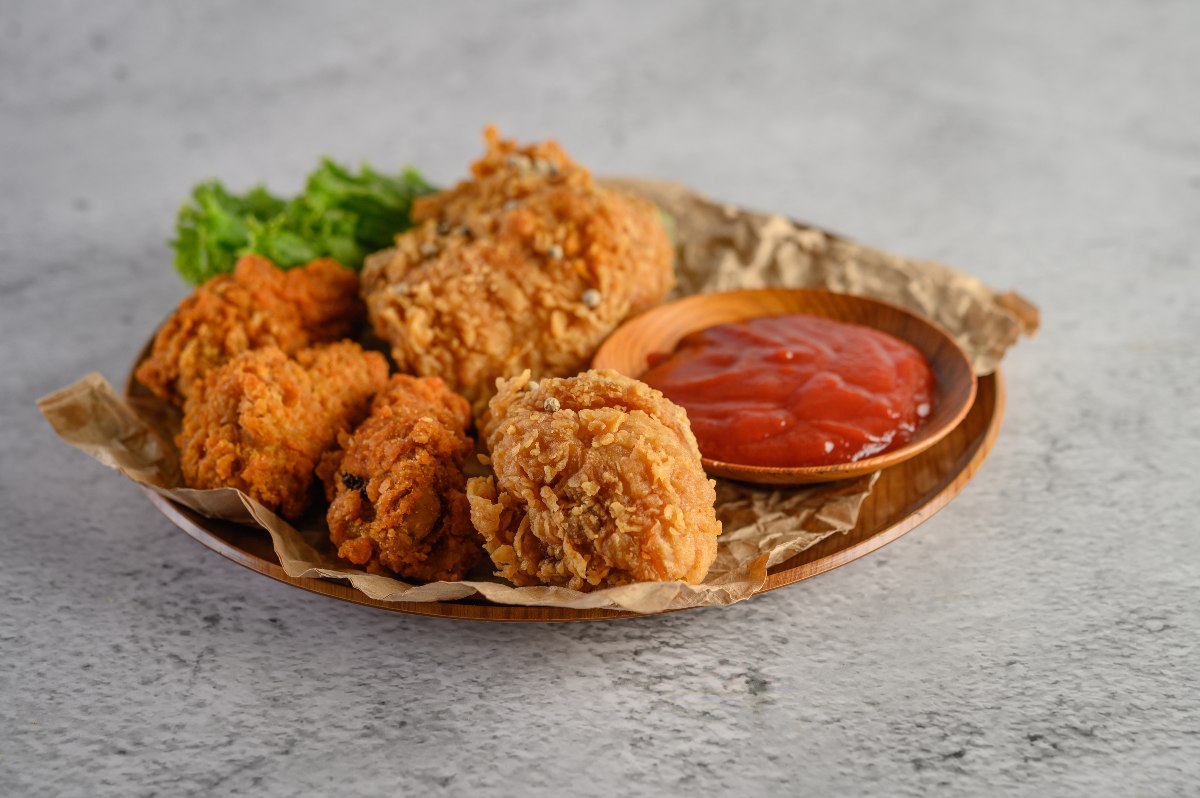
Frying is the most popular preparation style because it produces crispy, golden wings with irresistible flavor. However, oil absorption during frying adds calories and unhealthy fats.
Nutrition (per 100g):
- Calories: 291 kcal
- Fat: 25g
- Saturated Fat: 6g
- Sodium: 200mg
Health Note: While fried wings are satisfying, they should be enjoyed in moderation, especially if you are watching cholesterol and fat intake.
Baked Chicken Wings
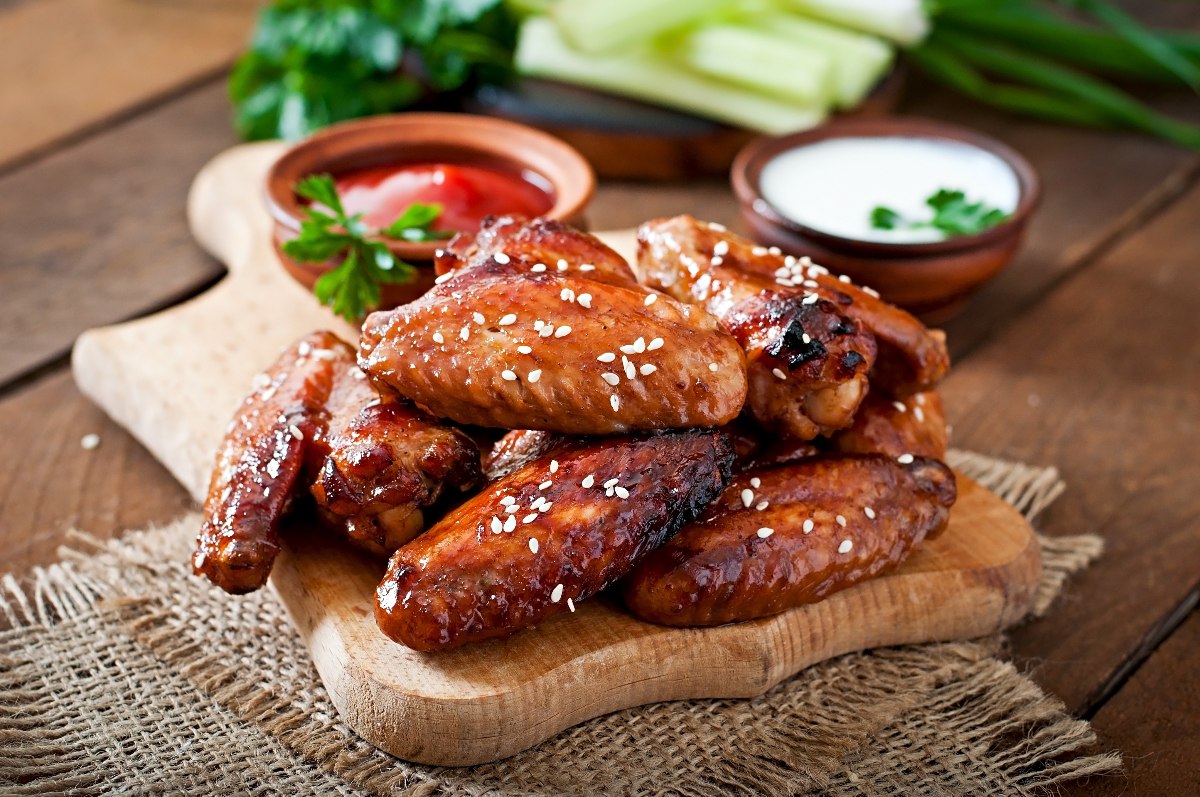
Baking uses little to no added oil, thereby reducing the fat content while maintaining the wings’ flavor. Many people prefer baked wings because they deliver crispness without the need for deep frying.
Nutrition (per 100g):
- Calories: 226 kcal
- Fat: 12g
- Saturated Fat: 3g
- Sodium: 100mg
Health Note: Baked wings are a guilt-free alternative, offering fewer calories and less fat while preserving protein.
Grilled Chicken Wings
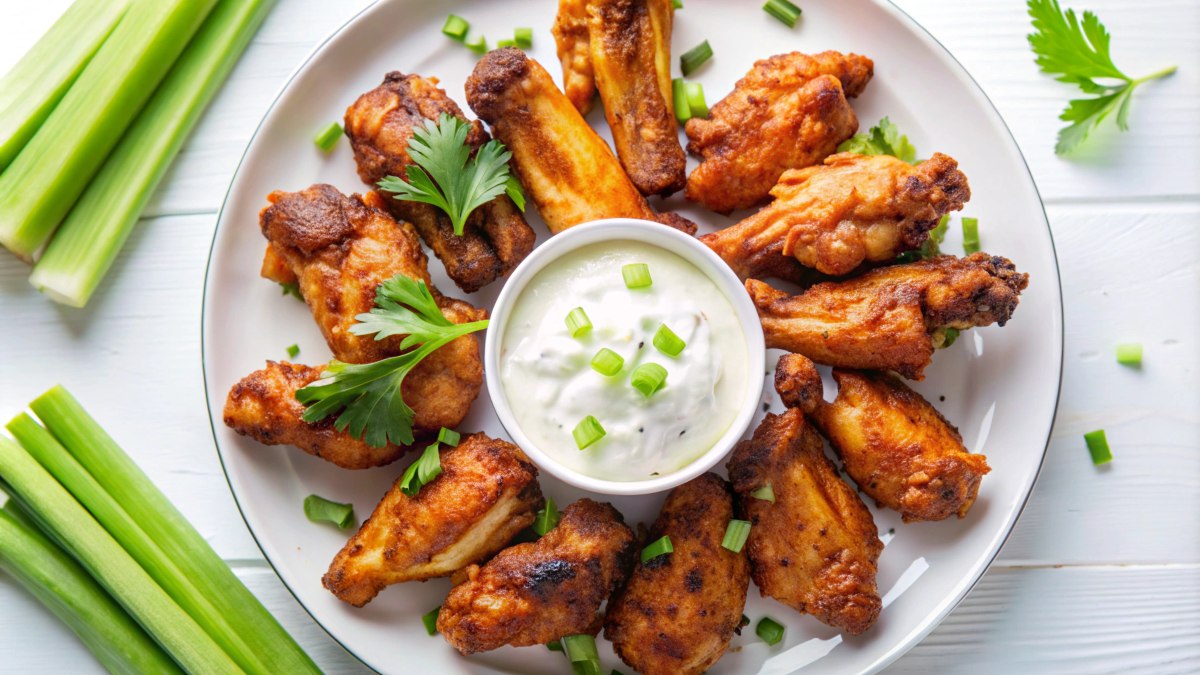
Grilling permits excess fat to dribble away, making wings leaner. They retain their high protein content while offering a smoky flavor many love.
Nutrition (per 100g):
- Calories: 210 kcal
- Fat: 11g
- Saturated Fat: 2.5g
- Sodium: 90mg
Health Note: Grilled wings are one of the healthiest options, as they combine flavor with lower fat and calorie counts.
Buffalo Wings
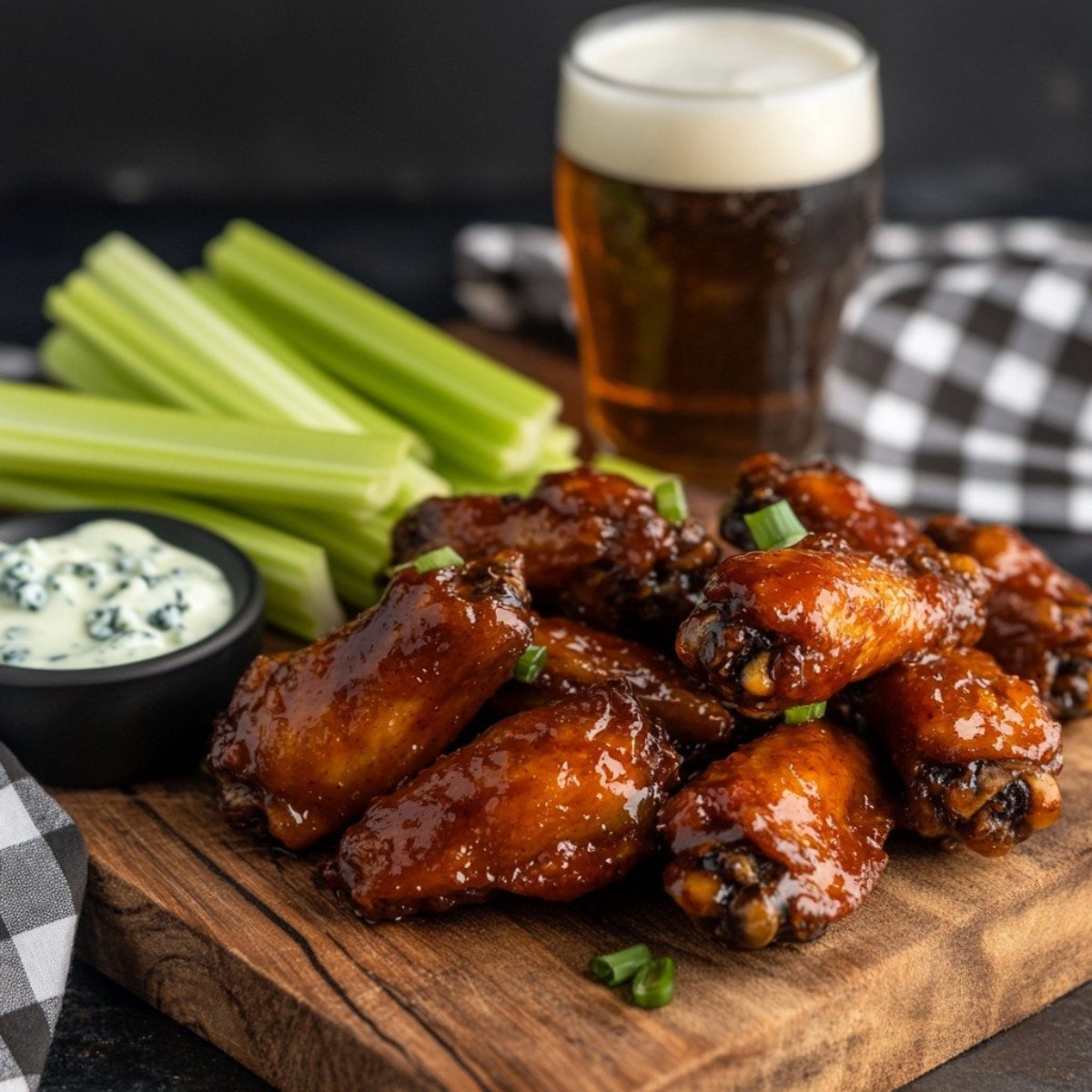
Buffalo wings are tossed in hot sauce and butter, which increases both flavor and calorie load.
Nutrition (per 100g):
- Calories: 240 kcal
- Fat: 20g
- Sodium: 250mg
Health Note: Delicious and spicy, but the added butter boosts saturated fat. Moderation is key.
Sauced or Breaded Wings
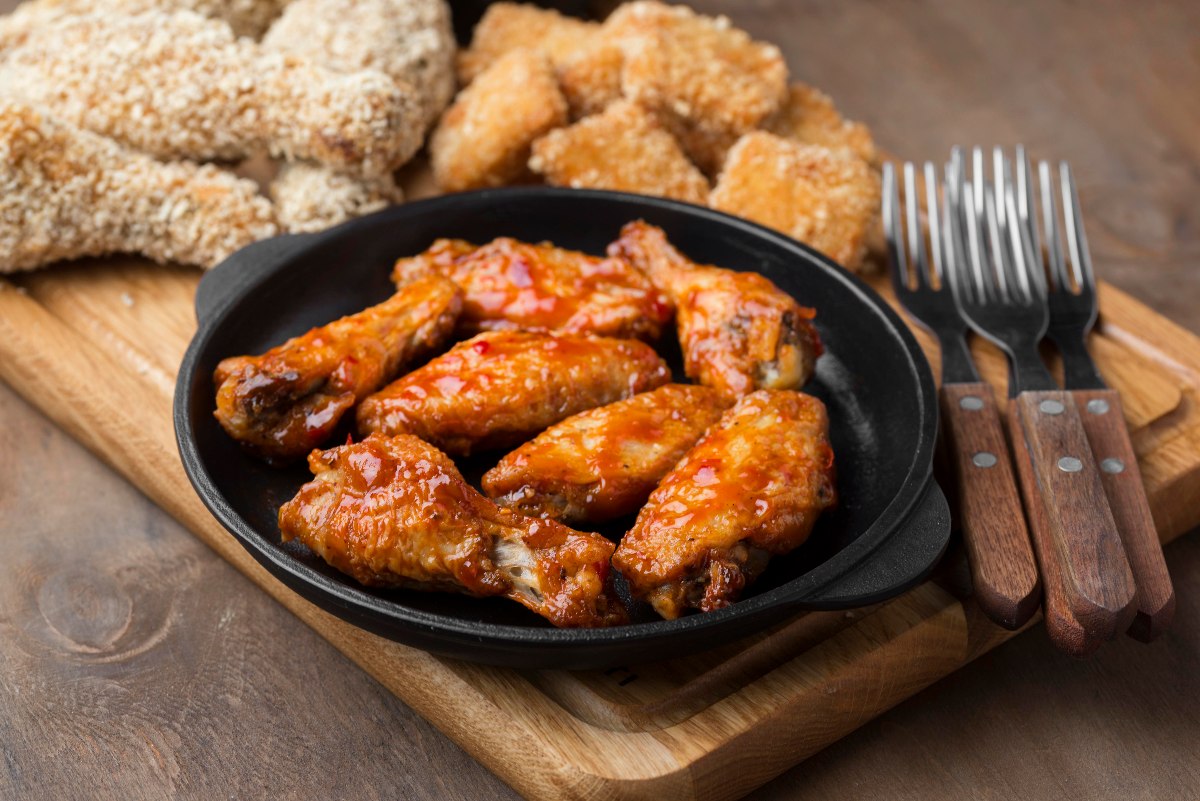
Extra coatings or sugary sauces increase calories and carbohydrates. Breaded wings also absorb more oil when fried.
Nutrition (per 100g):
- Calories: 310 kcal
- Fat: 24g
- Carbs: 10g
- Sodium: 280mg
Health Note: The least diet-friendly option due to added carbs, fats, and sodium.
Factors That Influence Chicken Wings Nutrition
When looking at chicken wings nutrition facts, several factors determine whether your meal leans healthy or indulgent:
- Cooking Method – Grilling and baking reduce fat, while frying increases it.
- Portion Size – Larger servings can easily double or triple calories.
- Skin On vs. Off – Skin adds extra fat; removing it lowers calories.
- Type of Oil – Olive oil is healthier than vegetable or palm oil.
- Seasonings & Sauces – Sugary BBQ sauces and high-sodium dressings can drastically alter nutrition.
Health Benefits of Chicken Wings
When prepared smartly, chicken wings offer many health benefits:
- Muscle Growth: 20g of protein per 100g supports muscle repair and growth.
- Energy Supply: Wings are calorie-dense, making them useful for active lifestyles.
- Micronutrient Support: Rich in niacin, zinc, and B vitamins.
- Heart-Friendly Options: Grilled or baked wings provide lean protein with less fat.
How to Prepare Healthy Chicken Wings
Making wings healthier is easier than you think:
Bake or Grill Instead of Frying – Reduces fat and calories.
Remove the Skin – Cuts down on unhealthy fats.
Use Healthy Oils – Olive or avocado oil adds good fats.
Flavor Naturally – Use garlic, lemon, herbs, and spices instead of sugary sauces.
Portion Control – Stick to moderate serving sizes.
Global Chicken Wings Culture
Chicken wings are more than just food—they’re part of culinary culture worldwide:
- United States: Buffalo wings are an icon of American sports culture.
- Korea: Korean sticky wings are renowned for their sweet and spicy glaze.
- Japan: Tebasaki wings are marinated and grilled with soy sauce-based seasoning.
- China: Spiced and braised wings are popular in traditional home cooking.
- Middle East: Wings are grilled with a blend of cumin, coriander, and garlic.
Each region offers unique flavor profiles while altering chicken wings nutrition facts through cooking techniques.
Chicken Wings vs. Other Chicken Cuts
| Cut of Chicken | Calories (per 100g) | Protein | Fat |
|---|---|---|---|
| Chicken Wings | 203 kcal | 20g | 16g |
| Chicken Breast | 165 kcal | 31g | 3.6g |
| Chicken Thighs | 209 kcal | 26g | 10g |
| Chicken Drumsticks | 172 kcal | 28g | 8g |
Insight: While chicken wings are flavorful, chicken breast is leaner and more protein-dense.
Chicken Wings in Different Diets
- Keto Diet: Wings (without breading) are keto-friendly due to high fat and zero carbs.
- Low-Carb Diet: Grilled or baked wings without sauces are ideal.
- Weight Loss Diet: Portion control is essential—opt for baked or grilled.
- Muscle-Building Diet: Wings provide protein, but watch added fats.
Popular Chicken Wing Recipes
- Baked Garlic Parmesan Wings – Crisp, cheesy flavor without frying.
- Grilled Lemon Pepper Wings – Zesty and low-fat.
- Spicy Buffalo Wings – A lighter version with less butter.
- Honey BBQ Wings – Reduced-sugar glaze for balance.
- Korean Sticky Wings – Homemade sauce with lower sodium.
Conclusion
Chicken wings can be both delicious and nutritious when prepared correctly. The core chicken wings nutrition facts indicate that they are a high-protein food suitable for most diets; however, factors such as cooking style, sauces, and portion sizes determine whether they remain a healthy option or become a calorie-heavy indulgence.
For the most innovative eating approach, it’s best to grill or bake wings instead of frying, remove the skin to reduce calories, and season them with herbs and spices rather than heavy sauces. Enjoying wings in moderation and pairing them with vegetables ensures you can savor their flavor while still keeping your health goals on track.
Frequently Asked Questions(FAQs)
How many calories are in 5 chicken wings?
Six chicken wings typically contain about 500–600 calories, but the exact number depends heavily on how they’re prepared.
Are chicken wings healthy?
Yes, chicken wings can be a healthy option, especially when cooked with care. They are naturally rich in high-quality protein, which helps muscle growth and restoration, while also providing essential vitamins and minerals such as iron, phosphorus, and zinc.
Do chicken wings have carbs?
Plain, unbreaded chicken wings contain virtually zero carbohydrates, making them a perfect choice for low-carb and keto diets.
Are buffalo wings high in sodium?
Yes, buffalo wings are typically high in sodium, mainly due to the sauce. Traditional buffalo sauce is created with hot sauce and butter, and many hot sauces contain a significant amount of salt.
Can I eat chicken wings on a keto diet?
Absolutely! Unbreaded chicken wings are keto-friendly because they contain protein and fat without added carbs. When fried in healthy oils or grilled without breading, they fit perfectly into a ketogenic lifestyle.








